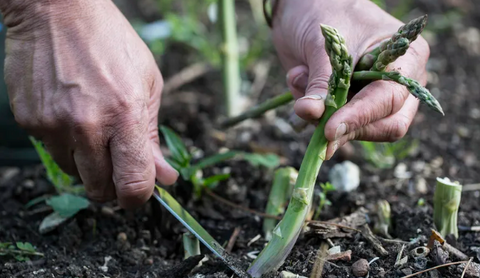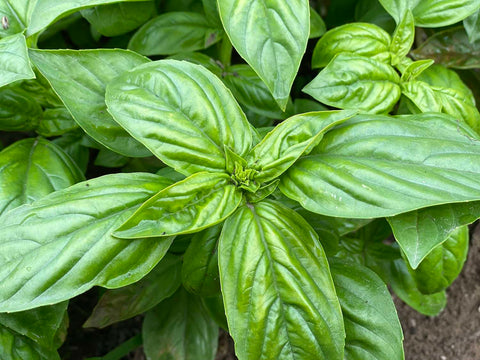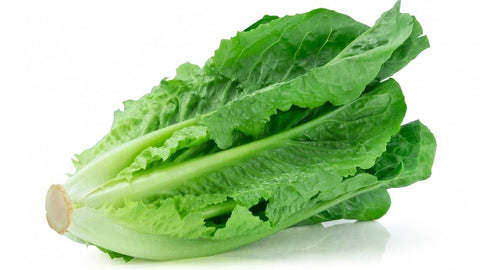Planting seeds is an art form that requires careful attention to detail and a deep understanding of plant needs. Whether you're a seasoned gardener or a novice with a green thumb, avoiding common mistakes can make all the difference in the success of your garden. In this article, we'll explore eight common mistakes that many gardeners make when planting seeds, along with tips for success to help you avoid these pitfalls and cultivate a thriving garden.

- Neglecting Soil Preparation
- Incorrect Seed Depth
- Overwatering or Underwatering
- Poor Seed Quality
- Improper Plant Spacing
- Ignoring Environmental Factors
- Failure to Label Planted Seeds
- Not Monitoring Seedling Growth
- Conclusion
1. Neglecting Soil Preparation
Soil preparation is the foundation of a healthy garden. Neglecting this crucial step can lead to poor soil structure, nutrient deficiencies, and reduced plant growth. Before planting seeds, it's essential to assess your soil's composition and pH levels, amend it with organic matter, and ensure proper drainage.
Consequences
Failure to properly prepare the soil can result in stunted plant growth, decreased yields, and increased susceptibility to pests and diseases. Without adequate nutrients and proper soil structure, seeds may struggle to germinate and establish strong root systems.
Tips for Success
To avoid this mistake, start by testing your soil to determine its pH and nutrient levels. Amend the soil as needed with compost, aged manure, or other organic matter to improve its fertility and structure. Ensure proper drainage by incorporating perlite or vermiculite into heavy clay soils. Regularly monitor soil moisture levels and adjust watering practices accordingly to maintain optimal growing conditions for your seeds.
2. Incorrect Seed Depth
Planting seeds at the wrong depth can hinder germination and seedling development. Seeds that are buried too deep may struggle to reach the surface, while those planted too shallowly may dry out quickly or become dislodged by heavy rain. It's essential to follow recommended planting depths for each type of seed to ensure successful germination.
Consequences
Incorrect seed depth can lead to uneven germination, weak seedlings, and decreased crop yields. Seeds that are planted too deep may expend all their energy trying to reach the surface, leaving them exhausted and unable to produce healthy plants. Conversely, seeds planted too shallowly may fail to establish strong root systems, making them more susceptible to environmental stressors.
Tips for Success
Refer to seed packets or gardening guides for specific recommendations on planting depths for each type of seed. Use a ruler or planting tool to ensure uniform seed depth across your garden beds. Water seeds gently after planting to settle them into the soil and provide adequate moisture for germination. Monitor seedlings closely as they emerge, and thin them if necessary to maintain proper spacing and prevent overcrowding.

3. Overwatering or Underwatering
Watering is essential for seed germination and seedling growth, but it's crucial to strike the right balance. Overwatering can drown seeds and promote root rot, while underwatering can cause wilting and nutrient deficiencies. Understanding your plants' water needs and providing consistent moisture is key to successful seed starting.
Consequences
Overwatering can lead to soil compaction, nutrient leaching, and the proliferation of soil-borne diseases. It can also create anaerobic conditions in the soil, depriving plant roots of oxygen and inhibiting their growth. On the other hand, underwatering can cause plants to become stressed and susceptible to pest infestations and diseases.
Tips for Success
Water seeds lightly but consistently after planting to keep the soil evenly moist, but not waterlogged. Use a spray bottle or fine mist nozzle to avoid disturbing delicate seedlings. Mulch around plants to help retain soil moisture and reduce water evaporation. Monitor soil moisture levels regularly and adjust your watering schedule as needed based on weather conditions and plant growth.
4. Poor Seed Quality
The quality of your seeds can have a significant impact on the success of your garden. Poor-quality seeds may have low germination rates, inferior vigor, or be prone to disease. Investing in high-quality seeds from reputable suppliers is essential for ensuring a healthy and productive garden.
Consequences
Using poor-quality seeds can result in wasted time, effort, and resources. Low germination rates mean fewer plants to harvest, while weak or diseased seedlings may require additional care and attention to survive. Additionally, poor-quality seeds may not produce the desired characteristics in mature plants, leading to disappointment and frustration for the gardener.
Tips for Success
Purchase seeds from reputable suppliers known for their high-quality products and customer service. Look for seeds that are labeled as certified organic or non-GMO to ensure they meet rigorous quality standards. Check seed packets for information on germination rates, seed viability, and storage recommendations. Store seeds in a cool, dry place away from direct sunlight to maintain their viability and vigor.
5. Improper Plant Spacing
Proper plant spacing is essential for promoting healthy growth and maximizing yields. Planting seeds too close together can lead to competition for light, water, and nutrients while spacing them too far apart can waste valuable garden space. Understanding the spacing requirements of your plants is key to optimizing their growth and productivity.
Consequences
Improper plant spacing can result in overcrowding, reduced airflow, and increased susceptibility to pests and diseases. Plants that are too close together may become tangled or shaded, inhibiting their growth and development. Conversely, plants that are spaced too far apart may not utilize available resources efficiently, leading to wasted space and decreased yields.
Tips for Success
Refer to seed packets or gardening guides for recommended spacing requirements for each type of plant. Use a ruler or measuring tape to ensure uniform spacing between plants within rows and between rows. Consider the mature size of each plant and its growth habit when determining spacing. Thin seedlings as necessary to maintain proper spacing and prevent overcrowding as they grow.

6. Ignoring Environmental Factors
Environmental factors such as temperature, humidity, and sunlight can have a significant impact on seed germination and seedling growth. Ignoring these factors can lead to poor results in the garden. Understanding your local climate and microclimates is essential for successful seed starting.
Consequences
Ignoring environmental factors can result in poor germination rates, weak seedlings, and decreased yields. Seeds that are planted outside of their optimal temperature range may fail to germinate or take much longer to sprout. Seedlings that are exposed to excessive heat or cold may become stressed and less vigorous, making them more susceptible to pests and diseases.
Tips for Success
Research the environmental requirements of your plants, including their preferred temperature range, sunlight exposure, and humidity levels. Plant seeds at the appropriate time of year based on your local climate and growing season. Provide shade or protection for seedlings during periods of extreme heat or cold. Monitor weather conditions regularly and adjust your gardening practices as needed to ensure optimal growing conditions for your seeds.
7. Failure to Label Planted Seeds
Labeling planted seeds is essential for keeping track of different plant varieties and planting dates. Without proper labeling, it can be challenging to identify plants as they grow, leading to confusion and mistakes in the garden. Taking the time to label your seeds accurately can save you time and frustration later on.
Consequences
Failure to label planted seeds can result in misidentification, mistakes in crop rotation, and confusion during harvest. Without proper labeling, it can be difficult to remember which plants are which, especially as they mature. This can lead to errors in care and maintenance, as well as missed opportunities for saving seeds or replanting.
Tips for Success
Label seeds with durable markers or tags that won't fade or wash away in the garden. Include important information such as plant variety, planting date, and any other relevant details. Place labels prominently near each planting site or in a central location where they can be easily seen and referenced. Keep a gardening journal or log to track your planting progress and record any observations or notes about plant growth and development.

8. Not Monitoring Seedling Growth
Monitoring seedling growth is essential for identifying and addressing problems early in the growing season. By keeping a close eye on your seedlings, you can catch issues such as nutrient deficiencies, pest infestations, or disease outbreaks before they become serious. Regular monitoring allows you to intervene quickly and take corrective action to ensure healthy plant growth.
Consequences
Failure to monitor seedling growth can result in missed opportunities for intervention, leading to poor plant health and decreased yields. Problems such as nutrient deficiencies or pest infestations may go unnoticed until they have already taken a toll on your plants. This can result in stunted growth, reduced vigor, or even crop failure if left unchecked.
Tips for Success
Establish a regular schedule for monitoring seedling growth, checking plants daily or weekly for signs of stress, disease, or pest damage. Keep an eye out for common problems such as wilting, yellowing, or leaf discoloration, as well as any unusual patterns or symptoms that may indicate underlying issues. Take proactive measures to address problems as soon as they arise, whether it's adjusting watering practices, applying organic pest controls, or providing additional nutrients as needed. Keep detailed records of your observations and interventions, noting any changes in plant health or growth over time.
Conclusion
Avoiding common mistakes when planting seeds is essential for cultivating a healthy and productive garden. By understanding the needs of your plants and taking proactive steps to address potential issues, you can set yourself up for success from the start. Whether you're a beginner or an experienced gardener, following these tips can help you avoid common pitfalls and enjoy a bountiful harvest year after year. So roll up your sleeves, grab your seeds, and get ready to grow!









